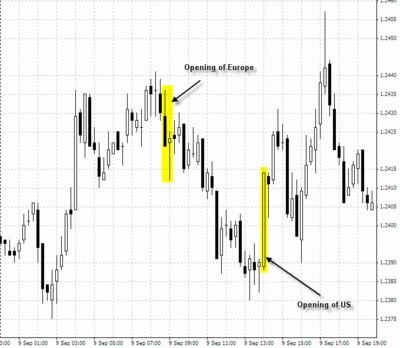Theory: When To Trade?
The question quite often comes up about when are the best times to trade? Everyone has their own ideas on what they think is the best time to trade, and quite often it depends on what type of system you are using. If you run a system that looks for trends, the best time for you would be different for a system looking for breakouts.Rather than get into all that however (again just google "best forex trading times" for plenty of info on that) let's look at the best times to trade based on your experience instead.
A beginner, I would think, would be someone new to the forex markets, someone who has yet to fully develop their trading system, or, if they have, find it hard to maintain the discipline to stick to it no matter what. Some things that might identify a beginner trade could be:
- Unaware of stop losses
- Unsure of trend identification
- Looking at one timeframe only (probably the 5M or 15M)
- Quick to jump into a trade, slow to get out
- Hazy on when to exit a profitable trade
With those points in mind, the safest trading time would be one where:
- The chances of big losses are low
- You have time to think you trades through
- There are some defineable trends to help you out in getting on the right side of the trade
- Sharp, quick movements in the opposite direction to your trade aren't common
So when is the best time to trade based on the above? Well lets look it another way, what are the times where the above points are not met. My opinion? The opening of the different markets! There are three major markets to look out for, the Asian market, the European market and the US market. The opening and closing of these markets are often the most volatile, with sharp movements up and down with no apparent order quite often seen and many a beginner trader crying foul over a sharp reversal on their trade they have just been watching for the last hour.
 Look at the above chart, this is a 15M chart from late last week of the EUR/USD. I have highlighted two areas, which is the opening of the European and US markets. Notice, how just before the opening of the price was slowly trending in one direction, but then, as the respective markets opened a sharp reversal sprung up in the opposite direction, taking with it many peoples profits I am sure, and spoiling many a traders tea. You find this espectially on the opening of Europe.
Look at the above chart, this is a 15M chart from late last week of the EUR/USD. I have highlighted two areas, which is the opening of the European and US markets. Notice, how just before the opening of the price was slowly trending in one direction, but then, as the respective markets opened a sharp reversal sprung up in the opposite direction, taking with it many peoples profits I am sure, and spoiling many a traders tea. You find this espectially on the opening of Europe.The best times for quiet, trending activity tends to be in the middle third of the trading sessions, the middle of the Asian session is a less volatile time, but can be too quiet for some. Approaching the opening of the European sessions, activity tends to pick up, but remember, be careful come opening time. I prefer the mid European session, but rarely get to trade it due to the time differences here in Australia, the mid US session can also be good but usually I am so buggered by that time, my decision making is shocking.
So pick what you prefer, if you are in it for a fast buck and don't care about making it a possible career, then opening and closing times can be right up your ally, but if you want to test out a system you are developing, look at the mid session times that suit you. Remember though news releases and data can effect everything, so always keep an eye out on the news anytime you trade.
Remember, this is not necessarily the most profitable time to trade in terms of pip movement, but while you are picking things up, minimising the chance of your account being wiped out is always a good idea.
I hope this helps someone, you can get the current times in the different areas by using this great little forex clock here. For my fellow countryfolk in Australia, below are the opening and closing times in AEST (thanks to aaron on Marketiva for these):
[AUS open 8:00am close 4:00pm]
[JYP open 10:00am close 6:00pm]
[EUR open 4:00pm close 12:00am]
[GBP open 5:00pm close 1:00am]
[USD open 10:00pm close 6:00am]
Ill leave it with a quote I read somewhere:
"Ametuers open the markets, professionals close them"





